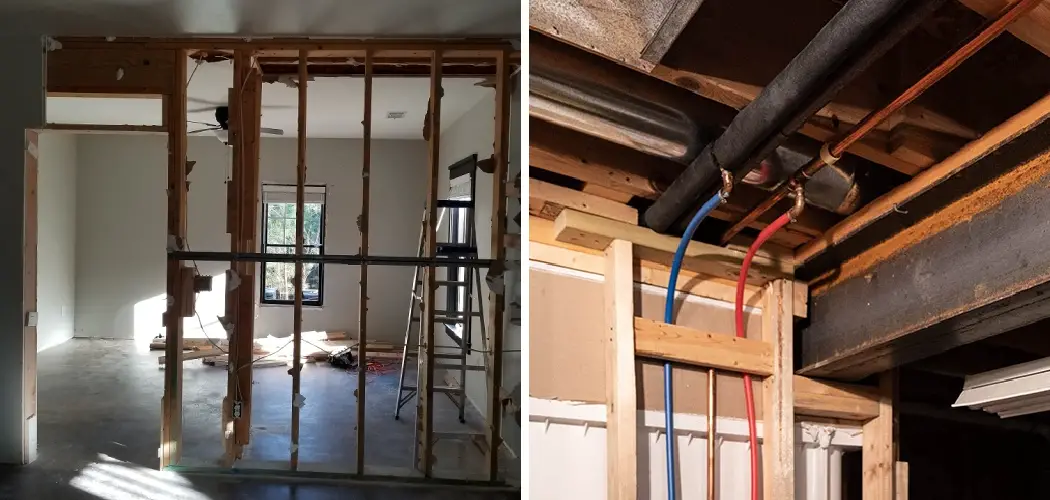Are you considering remodeling your basement? Perhaps you have a vision of transforming it into an additional living area, playroom for the kids, or an extra bedroom. While imagining everything that could be, one important factor stands in your way: is my wall really load bearing? Remodeling and renovating any part of your home are big investments and can easily be fixed with just a single wrong decision.
To make sure that this doesn’t happen during your project – let’s learn today how to tell if a basement wall is load bearing with guidance from experienced professionals!
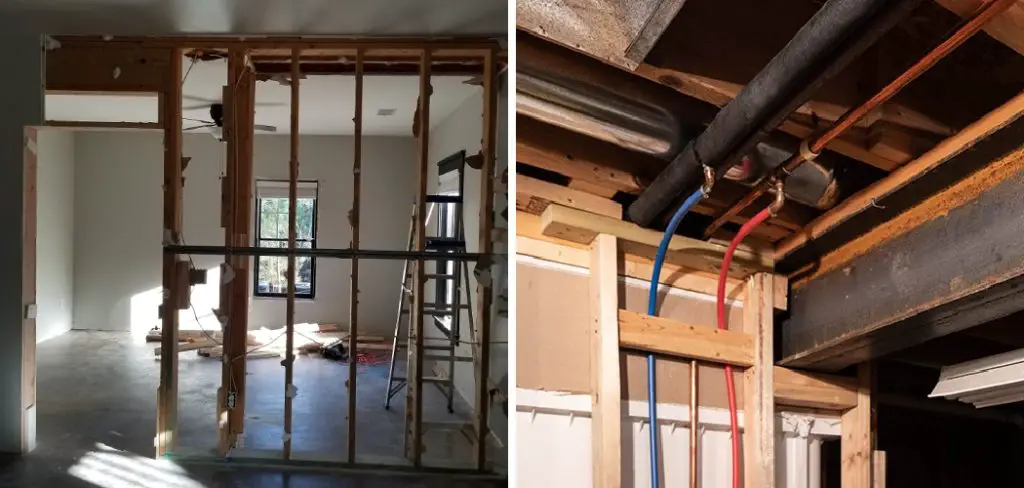
Load-bearing walls provide structural support for everything above them, and thus must be considered when planning any renovations. But how do you determine which walls in your basement are actually load bearing? In this blog post, we’ll walk through the signs to look for and explain what steps to take if one of your walls is found to be load bearing. With our advice, you can stay safe during the renovation process while still achieving the home of your dreams!
Why is It Important to Tell if a Basement Wall is Load Bearing?
1 . To Prevent Structural Damage
Knowing whether a basement wall is load bearing is essential to prevent structural damage. A large portion of the weight of the house rests on these walls, and if they are not designed to bear that kind of weight then it may cause significant damage over time. If you are planning any renovations or additions to your home, it is important to know what walls are load bearing so that you can plan accordingly and reinforce them as needed.
2 . To Reduce Costly Repairs Later On
If a wall is not load bearing, then it can be removed or replaced without risk of damaging the structure of your home. However, if the wall is load bearing and it is not reinforced properly, then it can lead to costly repairs down the line. By learning how to tell if a basement wall is load bearing, you can avoid these unnecessary expenses and ensure that your home is safe and structurally sound.
3 . To Ensure Safety
The most important reason why it is important to determine whether or not a basement wall is load bearing is for safety. If it is not designed to handle the weight of your home, then it can easily collapse and cause serious injury or death. It is vital that you check these walls before doing any work on them to ensure your safety.
By following these steps, you can determine if a basement wall is load bearing and take the necessary actions to keep your home safe and structurally sound. Whether you are planning to do some DIY work or hire someone else, knowing what walls are load bearing is the first step in ensuring your safety and avoiding costly repairs later on.
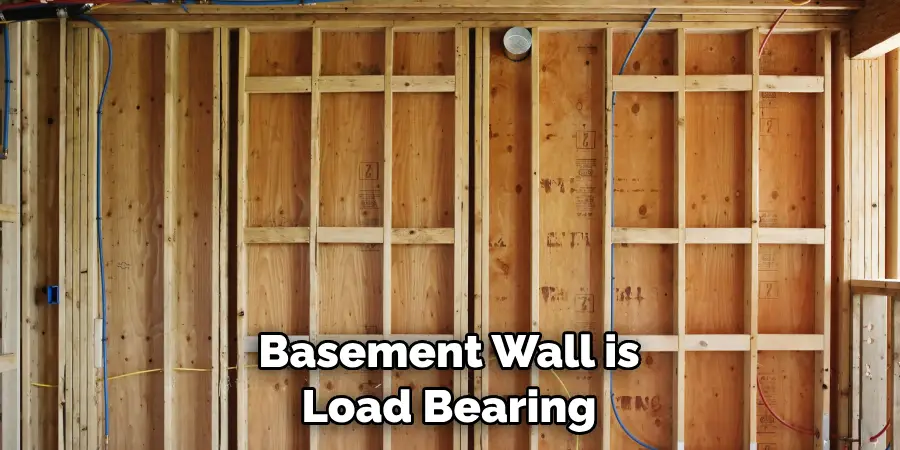
10 Ideas on How to Tell if a Basement Wall is Load Bearing
1 . Measure the Distance Between Wall Studs
One of the easiest ways to tell if a basement wall is load-bearing is by measuring the distance between studs using measuring tape. If they are 16 inches apart, then it is likely that you have a load-bearing wall. If they are 24 inches apart then the wall is probably not carrying any major loads.
2 . Assess Wall Height
A load bearing wall will typically be taller than a non-load bearing wall. This is because it needs to support the weight of the floors above it. The height difference between the two types of walls can range from 6 inches to several feet, depending on what level you’re checking. If you measure up from your basement floor and the wall is a few feet taller than the rest of your basement walls, it’s probably load bearing.
3 . Check the Wall’s Position
If you are trying to tell if a basement wall is load-bearing, checking its position can help. If the wall is directly under an exterior wall or another higher floor, then it’s likely that it is load bearing.
4 . Check for Joists
Another way to tell if a basement wall is load-bearing is to check the ceiling joists. If they line up with the wall’s studs, then it could indicate that the wall is in fact carrying some type of load.
5 . Look for Signs of Damage
If you notice signs of damage on a basement wall, it could be an indication that the wall is under some type of load. Cracks in the drywall or mortar along with bowing can all indicate that the wall is bearing more than its fair share of weight.
6 . Inspect Wall Framing
Taking a closer look at the wall framing can help you tell if a basement wall is load-bearing. In most cases, a load bearing wall will have more than two studs running along its length, while non-load bearing walls only require two.

7 . Check for Headers
Headers are used to span openings and support loads in a house. If you find one on a wall, then it could be an indicator that the wall is load bearing. Headers span across three or more studs and are much thicker than standard studs.
8 . Check for Beams
Beams are often used to support loads in bigger houses, so if you come across one while inspecting your basement walls, then it’s likely a load bearing wall. Beams are typically wider than studs and can span long distances across several walls.
9 . Look for Columns
If you’re inspecting your basement and come across columns, they could be an indication that the wall is load-bearing. Columns are used to support heavy loads such as balconies or upper floors.
10 . Consult an Expert
If you’re still unsure whether the wall is load-bearing, then it’s best to consult a professional. An experienced technician will be able to tell you what type of wall it is and how much weight it can support. They will also be able to advise on any structural changes that may be needed to make sure the wall is safe and secure.
Ultimately, it’s up to you to determine whether a basement wall is indeed load bearing. By taking the time to measure, inspect, and assess the wall’s position and structure you can get a good idea of what type of wall it is.
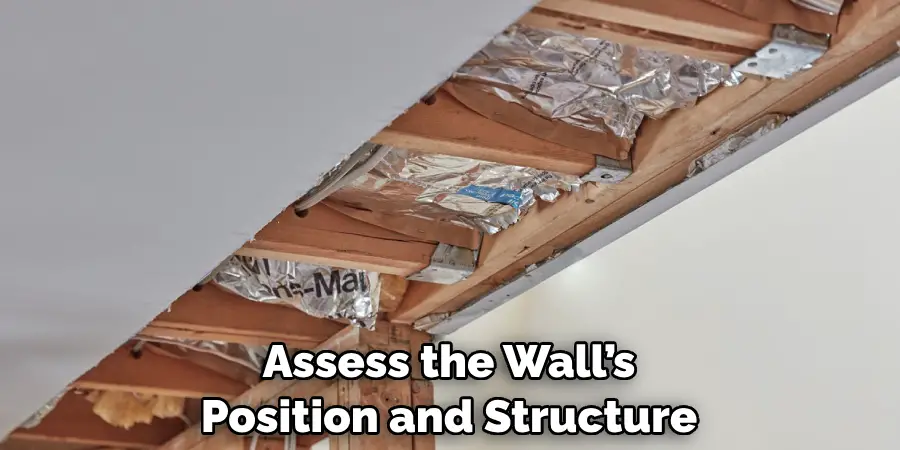
Frequently Asked Questions
What Precautions Should I Take Before Removing a Load Bearing Wall?
Before removing a load bearing wall, it is important to do the following precautions: Consult with an engineer or architect who can help you determine if the wall is indeed bearing any load. Make sure all utilities (i.e., electrical wiring and plumbing) running through walls are redirected prior to removal. Also, ensure that the structure of your home or building is adequately braced and supported before any demolition takes place.
Additionally, it may be necessary for a structural engineer to inspect the property after you have removed the wall to ensure that no damage has been caused as a result of its absence.
How Can I Determine if My Basement Wall is Load Bearing?
In order to determine if a basement wall is load bearing, there are a few key indicators that can help you. First, look at the direction of the joists in the ceiling immediately above the wall. If they run perpendicular to the wall, it means that they rest on top of the wall and are likely bearing some of its load. Additionally, examine the height of the wall in relation to surrounding walls and whether or not it appears thicker than other non-load bearing walls.
Finally, if you removed a load bearing wall without consulting an engineer first, look for signs of distress such as cracks on the ceiling or floor above where the wall used to be.
Are All Walls Supporting My Home’s Structure Considered Load Bearing?
Not all walls that support your home’s structure are considered load bearing. Generally, any wall that supports a beam or carries the weight of other building materials (such as roof trusses) will be deemed load bearing. Other non-load-bearing walls may provide privacy or support an upper floor, but they do not bear much of the home’s weight.
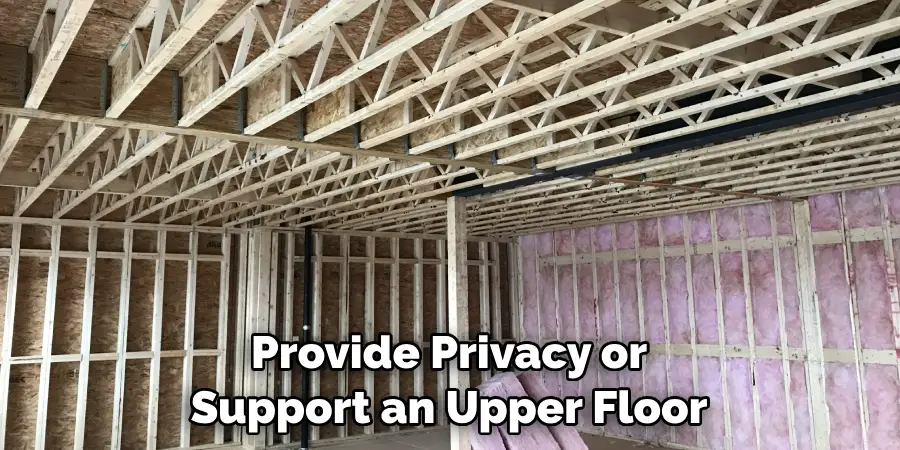
Conclusion
Now you have the answer of ” how to tell if a basement wall is load bearing” ! Ultimately, determining whether a basement wall is load bearing can be a tricky task. It requires substantial knowledge of both the building and its structural design. If you think that you have a load bearing wall in your basement, it is important to proceed with caution as removal of such a wall can cause significant damage to the rest of the structure.
If you don’t feel confident tackling the job yourself, enlisting the help of an experienced contractor is always recommended. With their extensive experience and expertise, they will be able to tell, with certainty, if a wall is load bearing and remove it correctly if needed. Taking these precautions will ensure that any project involving basements walls is completed safely and efficiently.

